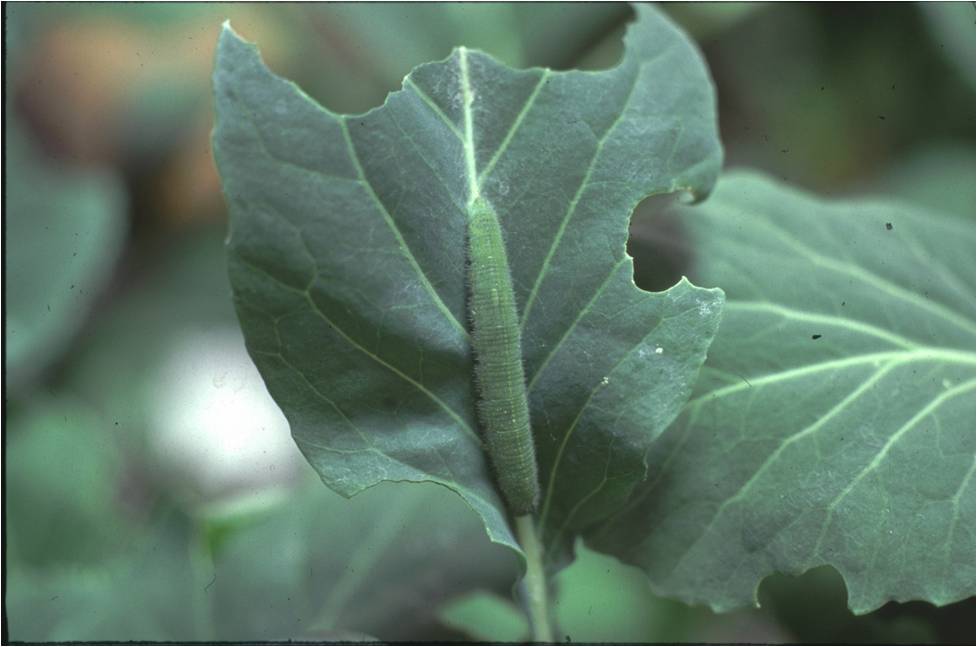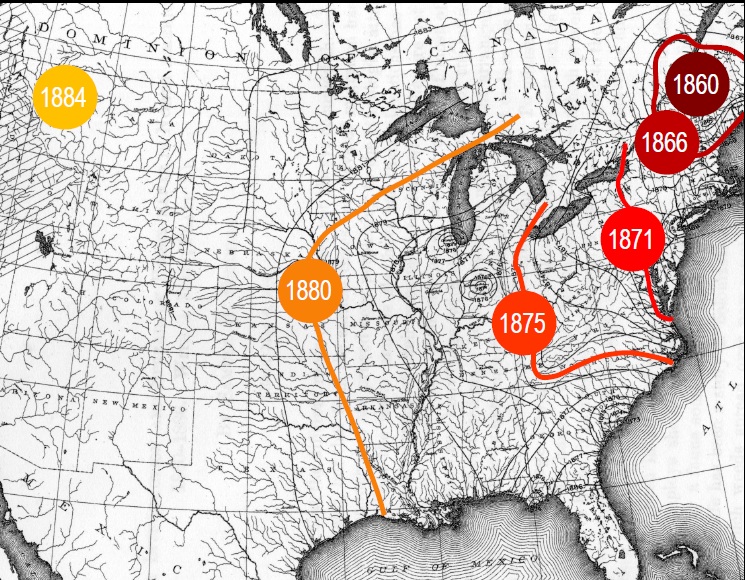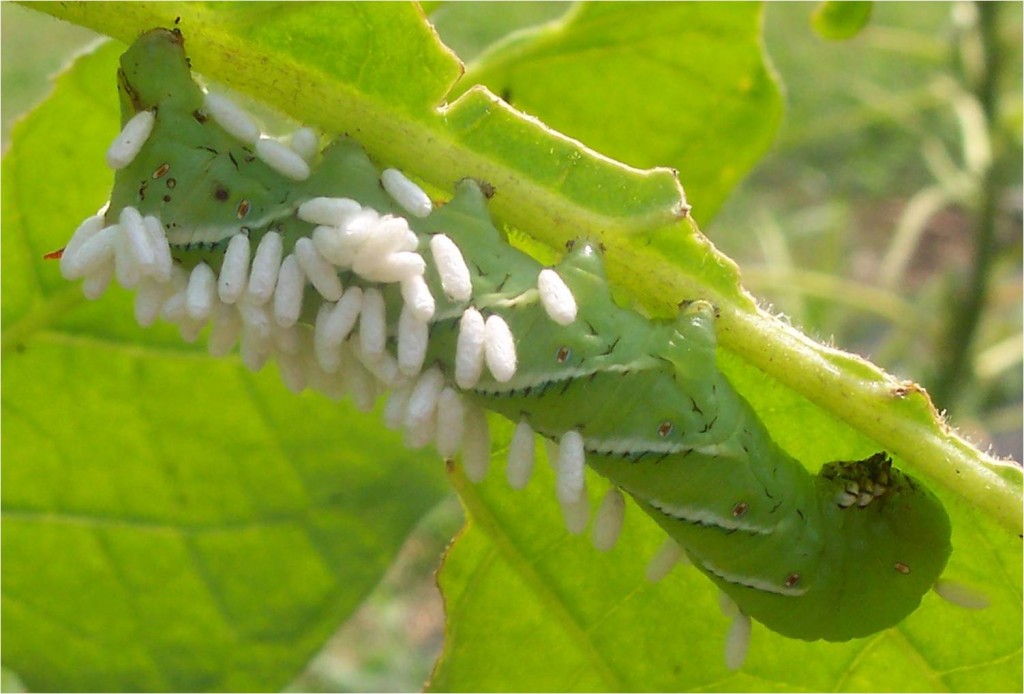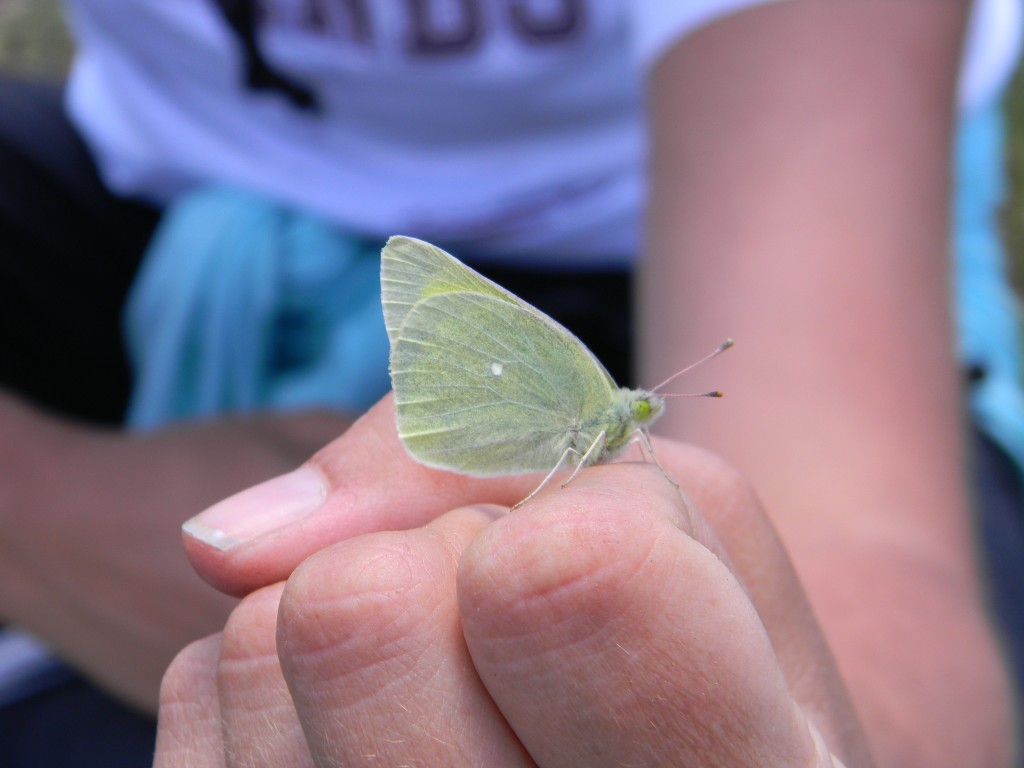How do organisms respond and adapt to complex, variable natural environments?
Our research integrates environmental physiology, ecology and evolution to address this question, using a combination of laboratory, field and modeling approaches. Much of our work is with temperate insects and their interactions with plants, but together with recent graduate students and colleagues we have also studied bacteriophage, endosymbionts, salmon, echinoderm larvae, and tropical butterflies (both temperate and tropical!).
One major theme in recent years is plastic and evolutionary responses to human-induced environmental changes—climate change, invasive species, agroecosystems—and their ecological consequences. A few of our current research projects:
- Mechanisms and evolution of thermal adaptation
- Ecological and evolutionary responses to climate change
- Environmental change and tritrophic interactions
- Phenotypic selection in nature

Mechanisms and evolution of thermal adaptation
Environmental temperatures vary across a wide range of spatial and temporal scales, and organisms must respond and adapt to such variation. We are interested in three distinct responses of insects and other ectotherms to temperature: thermal reaction norms — life history and other traits that vary as a function of developmental temperatures; thermal performance curves — rates of growth, locomotion and other aspects of organismal performance as a function of current temperatures; and thermal tolerance — the capacity to survive and perform at extreme temperatures. Our current projects use laboratory experiments and mathematical modeling to explore how prior thermal exposure, food resources and evolutionary history can alter these different responses. For example, our recent studies with Manduca sexta (Tobacco Hornworm) show that fluctuating temperatures early in development can increase optimal temperatures for growth, and heat stress early in development can increase later heat tolerance (positive effects), whereas multiple heat waves can reduce survival and development (negative effects) later in life. Thermal responses also interact with food resources. For example: insect studies show that larval hostplant and dietary quality can alter thermal reaction norms for adult body size, and models predict that declining food levels can reduce optimal and maximal temperatures for growth and survival, a phenomenon we call ‘metabolic meltdown’ (Huey and Kingsolver 2019). Our studies with M. sexta and Pieris rapae (Cabbage White Butterfly) also demonstrate that thermal reaction norms, performance curves and tolerance can evolve over the time scale of decades to a century, resulting in population differences in thermal responses across the species’ ranges.
Ecological and evolutionary responses to climate change
There is now abundant evidence that climatic conditions are changing across the globe, and that many species are responding with changes in seasonal timing, local population abundances, and geographic range. We are interested both in predicting ecological responses (e.g. species distribution and abundance) to climate change, and in documenting the importance of adaptive evolution in these responses. Our recent ecological studies integrate data for thermal reaction norms, performance curves and heat tolerance with life history models to predict fitness and distributional responses of insects to recent and future climate changes. A key insight from these models is that many insects in both tropical and mid-latitude regions will suffer under future climate change: tropical species because of increasing mean temperatures, and mid-latitude species because of stressful high summer temperatures. We are currently collaborating with Leslie Ries (Georgetown) and others to parameterize and test models for North American butterfly species that incorporate the effects of population differences in thermal adaptation. Our evolutionary projects combine historical data and museum records with new experiments and models, to detect plastic and evolutionary changes in Pierid butterflies. Our recent studies with Colias butterflies, in collaboration with Matthew Nielsen (University of Bremen) and Lauren Buckley (University of Washington), document evolutionary changes both in thermal performance curves for larval growth— particularly, increases in growth rate at higher temperatures—and in seasonal plasticity of adult wing melanin. These studies demonstrate how morphological and physiological traits may have evolved in response to climate change during the past 30-40 years. In collaboration with Lauren Buckley and Gwen Shlichta (Edmonds College), we are currently extending this work to consider recent evolutionary and plastic responses of performance curves, body size and wing melanin in other Pierid butterflies, including P. rapae and Pontia occidentalis (Western White Butterfly).

Environmental change and tritrophic interactions
No population is an island: it is part of a network of interacting populations and species. How such ecological networks respond to environmental changes such as climate warming and invasive species remains poorly understood. In collaboration with Chris Willett (UNC), we are exploring these issues using M. sexta and its related species, natural enemies, and hostplants in the field, emphasizing the interactions of Manduca species with native and invasive larval hostplants; the parasitoid Cotesia congregata that parasitizes (and kills) Manduca caterpillars; and the endosymbiotic bracovirus (CcBV) that is transmitted by the parasitoid. Past research shows that parasitism by Cotesia inevitably leads to host death, and that both the parasitoid and the virus manipulate the development, physiology and behavior of the host caterpillar, ensuring parasitoid success. Our recent studies show that the parasitoids are more sensitive to high or fluctuating temperatures than their hosts. For example, short heat shocks or heat waves can (depending on developmental timing) lead to complete mortality of the parasitoids and abnormal host development (including giant, long-lived caterpillars that never become adults). We are currently exploring the physiological and genetic mechanisms underlying these responses, and how endosymbionts and parasitoids mediate them. We are also evaluating whether heat stress can ‘rescue’ the host from parasitism and allow successful host metamorphosis. Our current projects also investigate the interactions between climate warming, differing hostplants, and parasitism – our current work explores the responses of M. sexta populations to an invasive plant species, Devil’s Claw, in the southeastern US during the last century. Our studies show that these M. sexta populations readily lay eggs and feed on Devil’s Claw, but can have lower rates of larval growth, development and survival on Devil’s Claw relative to other, more typical hostplants. However, M. sexta larvae laid on devil’s claw escape parasitism by C. congregata, which causes high mortality (~90%) to caterpillars laid on native hostplants. We are currently exploring how these host-parasitoid interactions differ on the native and non-native hostplants, their consequences for herbivory and plant fitness in the field, and their interactions with heat stress.

Phenotypic selection in nature
Many studies have documented directional (linear) selection on a variety of phenotypic traits in natural populations. In contrast, our understanding of non-linear forms of selection and fitness surfaces for multiple traits is limited. We are addressing this issue in two ways. First, stabilizing selection can result from opposing selection on correlated traits that affect different fitness components. For example: in many species, larger size is associated with greater fecundity in females and greater mating success in males. It is widely assumed that selection for increased adult size is balanced by opposing, correlated selection for more rapid juvenile development to escape juvenile mortality from natural enemies and other factors, but there is surprisingly little evidence from natural populations to support this assumption. We have quantified phenotypic selection on size and development rates in relation to natural enemies in Manduca sexta and Pieris rapae in the southeastern US. Our field studies show selection for large adult size and for rapid larval development in both species, even when parasitoid abundance is quite low. However, these studies showed that adult size and larval development time are not strongly correlated, so that selection for rapid development does not constrain the evolution of larger adult size. In collaboration with Sarah Diamond (Case Western) and others, we have also conducted meta-analyses that consider the scores of studies of phenotypic selection in natural populations that are now available, to assess patterns of directional, stabilizing, and correlated selection. Our analyses provide little support for the hypothesis that opposing selection between body size and development time is common in natural populations. Second, experimental manipulations of phenotype can expand the range of phenotypic variation to determine the mechanisms and patterns of selection. However, statistical methods for integrating information from experimental and observational (natural variation) studies to estimate non-linear selection are poorly developed. In collaboration with Lauren Buckley, we are currently developing and applying such methods to mark-recapture data for selection in a population of Pontia occidentalis (Western White) butterflies. These historical (1989-1996) studies used experimental manipulations and natural variation of wing melanin, wing size and body size; new statistical tools are allowing us to re-purpose these data to estimate fitness surfaces for wing and body traits. These new methods will allow us to make inferences about non-linear components of selection for multiple traits, and to estimate historical changes in selection during the past three decades in this population.

